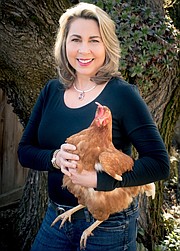Don’t miss planting garlic this fall
Fall is in the air and soon we’ll be putting our gardens to bed for the winter. But there is still one more vegetable that you could, and should, plant this fall: garlic.
Next to home-grown tomatoes, nothing compares to the pungent taste of home-grown garlic. Once you experience just how incredibly fresh and juicy homegrown garlic tastes, you’ll never want to buy garlic from the grocery store again.
Garlic is easy to grow, is relatively disease-free, and takes little space in the garden to produce a large crop. Garlic is usually planted in the fall, from late-September to mid-October. This allows the garlic clove to develop roots and become established before the ground freezes. Plants also needs a cold period of at least 40˚F for about four to eight weeks. Tender shoots will emerge in spring, followed by harvest in mid-summer.
There are two major types of garlic: softneck and hardneck. Within these two categories there are 11 subtypes and many cultivars — all with different flavor profiles — from mild to spicy-hot.
Softneck garlic, known for its braidable leaves, is the most common garlic type grown in the U.S. It’s also the type of garlic you’ll find in the produce section of the grocery store, as it can store for up to nine months or more. While softneck garlic favors a warmer growing climate, many cultivars such as ‘Inchelium Red’ grow very well in our region.
Hardneck garlic evolved from wild garlic and produces a stiff flower stalk called a “scape.” In the late spring, the curlicue scapes are cut off to divert the plant’s energy into producing larger bulbs. Scapes are a culinary delight and can be substituted in any recipe that calls for garlic.
The storage life of hardneck garlic is usually less than six months, but it is very cold-hardy and grows exceptionally well in the northern regions of the country. Try cultivars such as "Music" or a local favorite, "Killarney Red," developed and grown by Killarney Farms in Rose Lake.
Choose a sunny growing area that is clear of weeds or debris. Add a 2-inch layer of quality compost to the soil, as garlic thrives in fertile, loamy soil. Separate the garlic cloves from the bulb and mark planting rows about 8 inches apart. Plant individual cloves — pointy end up — about 3 to 4 inches deep leaving about 6 inches between each clove.
Water thoroughly and cover the garlic with a thick 3 to 4-inch layer of mulch, such as straw, pine needles or leaves. Mulching helps to prevent frost heaves over the winter.
When spring arrives, remove some of the mulch to allow the young garlic sprouts to push through the soil. Water throughout the growing season and then stop watering about a week before harvesting. Garlic is ready to dig when five or six of its lower leaves are brown.
Seed garlic can be found at your local Farmers’ Market in the late summer and early fall. You can also order online from regional growers that provide varieties acclimated to our growing climate.
It’s magical how one small clove turns into a plump, juicy garlic bulb with almost no effort on your part. Plant garlic in your garden this fall and I promise you’ll never want store-bought again.
Candace Godwin is a Certified Idaho Master Gardener. The University of Idaho Extension, Kootenai County Idaho Master Gardener program is located in the UI Research Park, 958 S. Lochsa St., in Post Falls. Learn more about us at https://www.uidaho.edu/extension/county/kootenai/garden or on Facebook. Visit us in person, email us at kootenaimg@uidaho.edu, or call us at (208) 292-2525. IMG services are free to the public.







